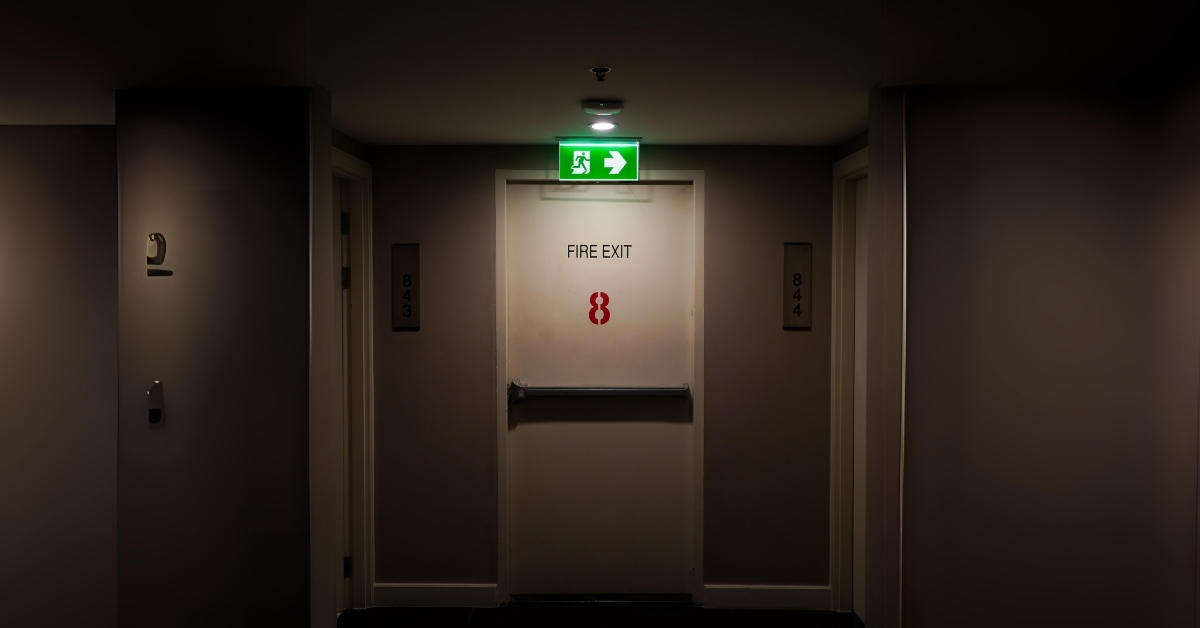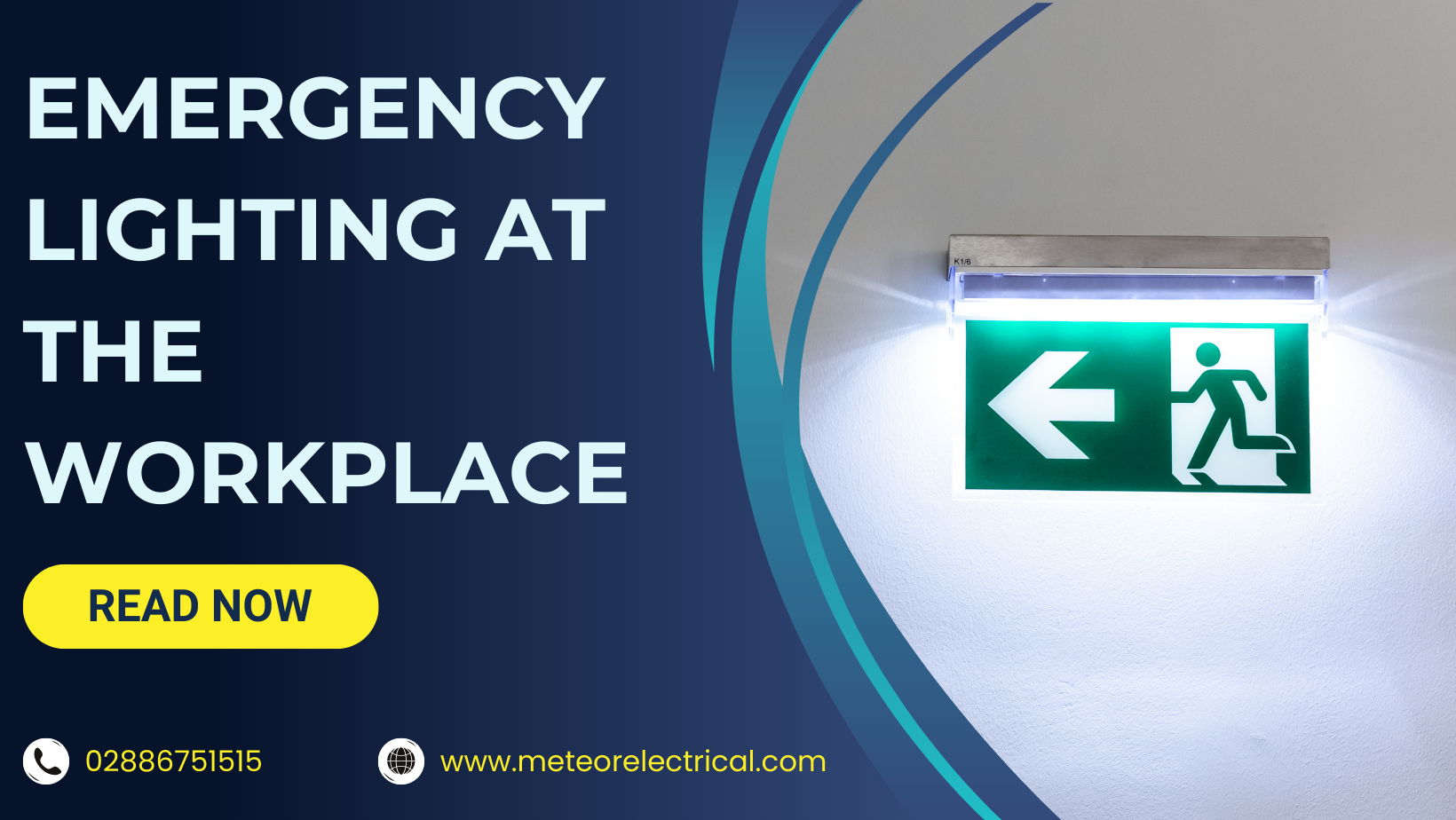The Purpose of Installing Emergency Lighting in your Workplace
What is Emergency Lighting?
Imagine being in a crowded office building or a busy shopping mall when, suddenly, the power goes out. Without a backup plan, this situation could lead to chaos and panic. This is where emergency lighting steps in as a crucial safety feature. Emergency lighting provides a backup light source in the event of a power cut, automatically turning on to illuminate escape routes such as corridors and stairways. This ensures occupants can safely evacuate the building, preventing panic and danger. But why is emergency illumination so important for your workplace?

Why are Safety Lights Provided?
Safety lighting and fire safety regulations now mandate that nearly all buildings must have these systems installed and fully operational. You've likely noticed these systems in offices, retail stores, movie theatres, restaurants, and other business establishments. According to British Standard 5266-1, a minimum standard of emergency lighting systems must be installed and maintained in all hospitals, schools, offices, businesses, and multi-story structures.
Safety lights are essential for ensuring the safety of occupants in commercial buildings. These systems typically use generator-powered lighting to remain operational during power outages, providing clear escape routes and enabling safe emergency actions. The installation of a well-designed and functional emergency light system can protect lives, making it crucial to select the appropriate range of emergency fittings.
What are the Benefits of Emergency Lighting:
There are many benefits to installing emergency lighting in your workplace, including the following:
1. Provides a Safe Working Environment
Emergency lights will be operational around the clock without using the primary power source. Emergency lighting will not only illuminate the exits in an emergency, but it will also give priority to busy regions of the building that are travelling on the way to an escape. In an emergency, exit emergency lights are also helpful for directing inhabitants. An exit light will assist in guiding passengers to safety even if the illumination is still present.
2. Extremely Easy to Install
The installation of emergency lights is extremely easy and requires very little maintenance.
3. Perfect for Power Outages
Emergency lighting ensures that you never go without lights. It also ensures that you don't have to "go blind" if you work in an area that frequently has power outages.
4. Compliant with current Regulations
It must adhere to the most recent British Standards for worker health and safety. We advise you to install a system that conforms to rules to maintain an ethical and safe working environment.
Credit: The HMO Platform
The Different Types of Safety Lighting
When installing a new emergency light system, there are two types: maintained and non-maintained lights. What is the difference between maintained and non-maintained safety lighting?
- Maintained Emergency Lights: These lights are continuously on, consuming more energy but ensuring pathways and exits are always illuminated. They are common in places like cinemas and theatres where darkness is prevalent.
- Non-Maintained Emergency Lights: These lights are not normally lit but turn on instantly during a power cut using their battery backup supply, typically lasting a minimum of three hours. They are commonly used in workplaces such as offices where people are familiar with escape routes.
Maintained vs Non-Maintained Emergency Lights

What are Maintained Emergency Lights?
Maintained emergency lighting is a luminaire in which the emergency light remains lit continuously, even during a power shortage. The main purpose is to keep pathways and emergency exits illuminated, providing a clear guide for people to exit the building. This type of safety light is more common in cinemas and theatres because these areas are usually in darkness, requiring maintained emergency lights to illuminate the pathways and exits.
If you're looking for an emergency light for a public place, maintained safety lighting is the best choice. This guarantees that all exit points and escape routes are illuminated at all times, aiding evacuation during a power outage.
Credit: John John
What are Non-Maintained Emergency Lights?
Non-maintained emergency lighting comprises luminaires that are not normally lit. They are designed to turn on instantly during a power cut, using their battery backup supply to last a minimum of three hours. The purpose is the same as maintained safety lighting: to safely illuminate pathways for a safe exit. Regular testing is essential to ensure that non-maintained lights are functioning correctly. These lights are commonly used in workplaces such as offices where people are familiar with the escape routes.
Installation and Wiring of Safety Lighting

It is important that electricians understand and comply with current Building Regulations and any local authority requirements when fitting emergency light systems. British and Irish Standards provide electricians and lighting designers with clear guidelines to work to. These standards are the minimum safe standards required by law.
When wiring safety lights, companies must have correct exit signs to comply with current regulations. It is important the emergency illumination is placed at an appropriate viewing distance and not mounted higher than 20° above the horizontal viewing angle.
Before installation, the breaker to which the emergency lights are connected should be tripped to ensure safe installation, preventing the risk of electrical shock and injury. Electricians should familiarise themselves with the instructions and guidelines to ensure safe fitting.
The Emergency Light Installation
The first step is to ensure the circuit is turned OFF before starting the procedure and identify the electrical voltage of the connection being made to the safety light fittings. Next, examine the unit connections and connect the wires with care. Then, switch the power on and allow the battery backup system to charge for up to 24 hours. Finally, when the battery is charged, test the unit to ensure full functionality.
Incorrect installation of emergency light systems can be hazardous, potentially burning out the transformer and circuit board. Therefore, installation should be completed by fully trained professionals. Once the safety lighting systems are installed to the required standard, it is important for the premises owner to maintain the fixture by organising a fully rated duration test every year.

Which Type of Safety Lighting is the Best?
Building and fire regulations require all public premises to have fitted and fully operational emergency light systems. Therefore, choosing the most effective safety lighting for your premises is crucial.
Our team at Meteor Electrical offers a wide range of emergency lighting to ensure your home or business is efficiently lit during a power shortage. Our range includes LED safety lights, which provide strong light output with lower wattage and allow significant energy cost savings.
We stock Kosnic’s LED Emergency Exit Sign, a self-contained, multi-purpose, non-maintained, or maintained 3-hour emergency luminaire solution. It is available in both standard and self-test versions.
- All legends included
- Maintained and non-maintained options
- 20mm Conduit entry
- IP65 and IK10 (vandal resistant) for internal and external uses
- Dual entry push-wire terminal block for easy loop-in loop-out wiring
- Available in self-test version
- BESA box fitting points
The 5W emergency exit bulkhead can be used with or without the emergency exit graphics and is supplied with adaptable self-adhesive graphics to indicate escape routes as necessary.
If you require further advice or help with designing your safety lighting systems, please contact our lighting specialists via email at [email protected].

